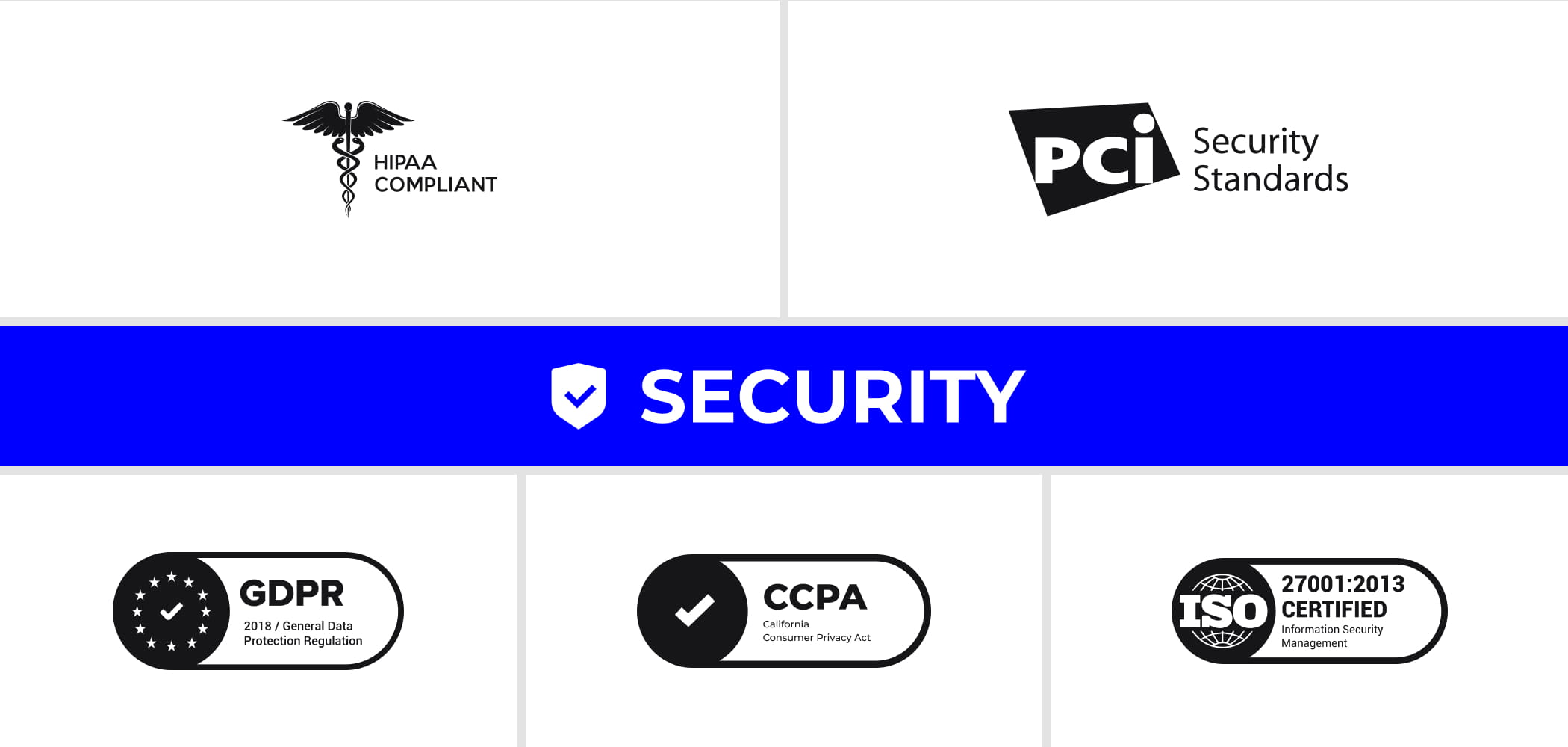Table of Contents
51% of companies have already implemented RTO (return to office) policies and 40% more are planning to do that till the end of 2024. The reasoning: the lack of team bond impacting company revenue. But what if the imperfect remote team management is what impacts company revenue?
Often, rushing back to office is not the answer. Even the companies promoting RTO don’t go for a full office week, understanding that skilled pros prefer job offers with remote options. Pay attention that about 70% of specialists feel more productive working from home and 56% of IT teams in the world have integrated remote work into their policies. Altogether, one remote team member can save you about $2000 for office space.
Remote team work is so widespread in 2024 that there are already a lot of ways to round all its “corners” and reap all its benefits. Let’s review efficient management styles, lifehacks, and software to manage remote teams and keep them productive.
What You Should Do Before Managing Teams Remotely
Check Soft Skills and Backgrounds
Remote team management starts with handpicking people. Hire remote developers, designers, or QA engineers who are compatible with remote mode.
The signs of great remote specialists
They are well-organized by nature or have already developed their time-management skills before you meet them.
They have a bunch of successfully finished projects behind them, not just submitted tasks.
They can explain their thoughts and report about their results clearly in written. This is key for a smooth asynchronous communication.
They are open-minded and easily merge into an international environment.
They love what they do and are always upskilling.
They are flexible and can switch between tasks according to a changing project’s priorities.
Even more soft skills are essential when you need to find a developer for a startup. As a founder or a CEO, you are focused on business growth, so you would need someone driven on your team to lead a direction like technology. I call them pioneers, people who share your mission and vision, take it as their own, and execute it, leading others by example. Such pioneers spark up with ideas and break walls, when you are starting a venture, requiring 100% commitment and a solid portion of cross-functionality from your team.
Task us with handpicking matching remote specialists. Tap into the 15% of talent who can ignite ideas and break barriers for your project.
Start hiring todayDiscuss Expectations
Remote tech team hiring requires articulating of work hours and communication channels from the outset. Also, let remote team members know what you expect from them regarding workflow, meeting frequency, communication, feedback, and performance. This helps you reduce possible ambiguity.
During the remote onboarding process and first months, it’s better to conduct daily catch-ups, which can be less frequent over time.
Pick the Right Tools for Managing a Remote Team
It’s impossible to manage a remote team without reliable communication and collaboration tools.
Zoom, Google Meet, or Slack enable real-time communication.
Asana or Jira are great for file sharing and project management.
The tools above are the most popular and field-tested, yet we encourage you to explore the alternatives. All-in-one project management platforms, aka Butter and ClickUp, integrate all the collaboration tools and documents in one interface and automatically summarize your meetings. Virtual workspaces with their 3D immersion bring more bond, fun, and control at the same time. Just make sure that a solution provider sticks to international data privacy protocols and is not going to disappear from the market soon.
How to Manage Remote Teams: 12 Tips
Streamline Communication
If people know that a new meeting is coming, they will be able to analyze their achievements and come up with all the possible questions. So, the first tip on how to manage a remote team is to conduct regular check-ins to sync an agile software development team.

Not to get confused in a bunch of discussion points, I’d divide all the team syncs by their functionality.
Strategic Meetings
It’s when key people who lead a direction approve the business goals and the ways to reach them.
Operational Meetings
The idea is to gather specialists working towards one goal and track weekly, monthly, quarterly, and more long-term progress. To this type of meeting, I’d include:
Daily stand-ups
Sprint or release planning
Backlog grooming
Design, sprint, or code review
Demo meetings (when a team showcases features or functionalities to stakeholders or other teams)
Problem-solving
Retrospective Meetings (Retros)
Retros are held at the end of each sprint or project phase to reflect on what went well, what didn't, and how the team can improve its processes going forward.
One-to-Ones
Along with team meetings, arrange one-to-ones with each specialist to make sure they understand their goals. The time is limited at big team calls, you know.
Team get-togethers should follow a pattern approved for each meeting type, and remote specialists should always be included in all relevant group virtual interactions.
In addition to creating opportunities for communication, it would be nice to clarify the communication standards, like preferred tone of voice and email style.
P.S. A tradition to conduct Video On meetings only creates a work-focused mood.
Set and Track KPIs
Agility brings value to a tech project, but it doesn’t mean you should treat your plans like “We’ll see”.
By tracking KPIs, you can visualize your goals and detect areas for improvement to be sure you can achieve commercial results.
To enhance productivity, you can track:
Sprint Burndowns — tasks completed within a sprint
Lead Time — time to deliver one feature or bug fix
Cycle Time — time to complete one task
Deployment Frequency within a given period
Work in Progress — tasks which are in progress simultaneously.
Improving productivity should not harm a software product quality if you strive for long-term success and customer satisfaction. Along with the KPIs above, we’d pay attention to:
Defect Density — defects or bugs found per, for example, 1000 lines of code
Code Coverage — code covered by automated tests, a higher percentage indicates more robust testing.
Change Failure Rate — software changes that result in failures or incidents in production, a lower percentage implies higher quality.
Customer Satisfaction (CSAT/NPS) — scores reflecting customer perception of the product's quality.
Mean Time to Recovery (MTTR) — the average time taken to resolve failures or incidents.
Technical Debt — an assessment of the cost and effort required to fix issues and deficiencies in the codebase over time.
Modify KPIs based on feedback from your team and your project needs.
Manage Remote Team Honestly
If you know how to manage remote teams without time trackers, you’ve mastered remote leadership. Trust is the cornerstone of remote worker management. Let your team members be the owners of their work and make decisions autonomously. Then, they will do their best to prove they deserve your trust.
Honest tech team management is also associated with sharing strategic plans and detailed feedback with your team, as well as encouraging your team to share honest project statuses and feedback about each other and direct managers.
With transparent workflows, you can quickly overcome upcoming challenges and meet project deadlines.
Set Boundaries
When managing a remote team, prevent burnout. Let your company policy forbid disturbing specialists after work.
To take care of work-life balance in international teams, we’d also take into account time zones compatibility. To find specialists from close time zones is a pretty popular request from our clients. In such cases, we scan for ideal candidates strictly in the approved regions.
Focus on Security
Ensuring security of data transfer and storage must take a noticeable place in managing a remote team.
We believe that team leaders should control if a team sticks to all the necessary regulations like GDPR, CCPA, ISO/IEC 27001, or HIPAA if it’s healthcare, and security standards like OWASP Top 10, or PCI DSS.

The most common security must-haves are setting multifactor access to all working systems and issuing corporate laptops with an MDM system to create a well-protected workplace.
Audit Tools
Ideally, team managers should know which tools each specialist uses. First, because all the third-party software should undergo a security check-up. Second, because you can learn about the most feature-rich and/or time-saving options and promote them within the entire team.
Provide Support
It is the shortest yet not the tiniest tip on managing teams remotely. Whether it's technical assistance, professional development opportunities, or mental health support, take care of your team's well-being. Then, you can expect the same caring attitude to your project.
Have Fun, Change Lives
It’s not easy to manage a remote team if team members see each other like green dots in Slack. Let them get to know each other better. Remote team-building activities are usually close to those we had in old gold offices. Book clubs or photo challenges, coffee breaks or virtual games — opt for the events interesting to the majority of your team members.
Great team-building is like watching your fav TV show: when a team can't wait for a new episode. Each episode (and joke) fuels team spirit. So, team leaders are bit-directors as they need to prepare plans for several sessions ahead.
By managing teams remotely, one can not only bring fun but also change lives. It could be the lives of your team members if it’s a running challenge, or lives of homeless pets if it’s a donation challenge — possibilities are endless.
Create Collaborative Space
A teamwork blossoms in a team space. Informal chats, mutual boards for idea exchange, brainstorming sessions — think of them as playgrounds where the most complex solutions can be born without extra tension.
Promotion of upskilling can also improve your working environment. Like family hobbies rally families, a habit to attend courses and bring the new knowledge to fellow specialists may rally and level up your team.
Document Operations
Managing remote employees is much stressless if you document workflows. Yes, it’s needed to put some effort into developing SOPs (standard operation procedures) at the beginning. Yet they address 1000 and 1 question, like who covers what in a certain process, where which documents or code are stored, and how to act in case a specialist is missing something. With SOPs, time to train new team members shortens significantly.
Leave Room for Maneuver
Recognize that remote work offers flexibility in terms of when and where work gets done. Yet, this flexibility is rather your friend than your enemy. Want a loyal team? Allow your team members to work in ways that suit their individual preferences and circumstances, as long as they meet KPIs.
Lead by Example
Those business leaders who are successful in managing remote teams typically demonstrate the behaviors and work habits they expect from their teams. Maintain open communication, adhere to deadlines, and prioritize work-life balance to set a positive example for your remote team members to follow.
What is Behind the Scenes of Remote Worker Management
Non-poetic processes related to paperwork, payroll, and compliance.
Signing contracts and related documents, approving sick leaves and vacations, describing policies and procedures in the handbook.
Collecting and maintaining specialists’ data, accurate payroll processing, including bonuses and deductions accrual.
Adhering to federal, state, and local regulations governing employee payment (which suggests studying all those laws).

No matter how many tips for leading remote teams you put into practice, there are still 24 hours in a day. You, most likely, have a bunch of tasks, except for remote people management. So, delegating more or less tasks to third parties can level up the quality of People ops and your product or service development.
We can help you effectively manage remote teams, just decide which tasks you’d like to delegate.
Let’s start from hiring a programmer in budget-friendly IT clusters, sticking to all the local laws.
Our structured interviews are designed to spot the most remote-friendly talent.
Our HR onboarding is fully paperless and takes only 1 business day.
Our talent management system can be flexibly customized yet always designed to retain your top performers.
Drop us a line about positions you want to fill, mentioning if you need only filtered CVs and fully-managed contracts with specialist or team retention included.
FAQ
What is the best leadership style for remote teams?
Managing remote teams often requires a blend of transformational, servant, and adaptive leadership. Transformational leadership inspires and motivates through clear communication and shared vision. Servant leadership emphasizes support and empathy, crucial for stronger bond. Adaptive leadership allows leaders to adjust strategies to meet team dynamics. This hybrid approach is great for growing both effective remote teams and individual growth.
Are remote teams more productive?
Recent research indicates that, on average, those people who work from home are 47% more productive compared to working in an office. Remote workers spend 10 minutes less each day being unproductive, as Always On culture increases team’s involvement.
How often should remote teams meet?
Everything depends on how well the system of online meetings is organized and to what extent a team is engaged in all of them. Meeting in person once per year is enough for close-knit remote teams. And even such meetings are rather an option, not a necessity. After all, informal online gatherings, like Christmas celebrations, could be not less engaging if well-though-out: when a moderator creates the opportunities for all the participants to express themselves.
Stay in tune
Curated Tech HR buzz delivered to your inbox




